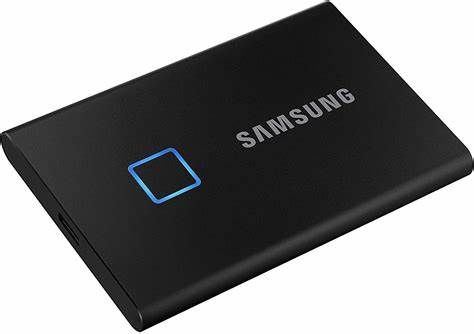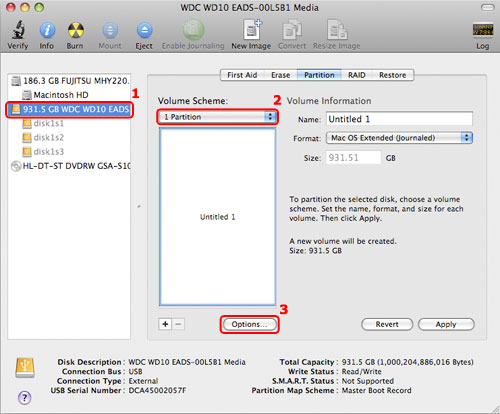

- FORMAT A PORTABLE HARD DRIVE FOR MAC 2016 MAC OS
- FORMAT A PORTABLE HARD DRIVE FOR MAC 2016 FULL
- FORMAT A PORTABLE HARD DRIVE FOR MAC 2016 PRO
The next section discusses the correct way to format your Mac storage drive without data loss. DO NOT click the Initialize button unless it’s a new drive or you have recovered data from it. So, you end up losing your data.Īlso, when you connect a corrupt or unreadable external storage drive to your Mac, macOS will prompt you to initialize the disk. When your Mac storage drive has stored data on it, and you accidentally erase the drive in a new file system format, macOS removes all references to the data. Perfecting the storage drive in case Disk Utility fails to repair itīut storage drive formatting involves certain risks.Changing the file system format for cross-compatibility.Resolving corruption or unreadable error of the storage drive.Preparing the startup disk to reinstall macOS.You may even need to manually format your internal or external Mac storage drive or volume in the compatible file system. MS-DOS (FAT) or exFAT format to make your external storage drive cross-compatible with both macOS and WindowsĪ new Mac with its built-in solid-state drive or hard drive comes pre-formatted with a file system that contains the macOS.
FORMAT A PORTABLE HARD DRIVE FOR MAC 2016 MAC OS
Mac OS Extended format for macOS Sierra 10.12 or earlier.APFS format for macOS Big Sur 11, Catalina 10.15, or Mojave 10.14.Different file system formats exist for different operating systems. Recover Data Lost due to Accidental FormattingĪn internal or external Mac storage drive requires compatible files system format to be accessible in macOS. Format a Mac External Hard Drive Using TerminalĤ. Format the Startup Disk in macOS Recovery Modeģ. Back Up Your Mac Hard Drive before FormattingĢ. At this point, you can store your hard drive away or convert it to an external hard drive. Remove the four torx screws attached to the hard drive and set aside. Carefully wiggle the connector - not the ribbon itself - to disconnect it. You'll see that a SATA ribbon is attached to one end. To remove the hard drive, use the regular screwdriver to unscrew the two black screws belonging to the bracket securing the hard drive. Use a soft brush or gentle bursts of compressed air to release the dust and grime.
FORMAT A PORTABLE HARD DRIVE FOR MAC 2016 FULL
I found that after years without cleaning, mine was full of dust. At this point, you might want to clean the inside of your Mac. When the cover comes off, touch a metal part to release the static electricity. Put them in a small container as you remove them they are easy to misplace. Remove your MacBook's back cover by unscrewing the tiny screws. In case you missed it in the previous step, shut down your computer. When the process is complete, eject the SSD and shut down your computer. This could take anywhere from 30 minutes to a few hours, depending on how much you have stored on your hard drive. Then choose Backup All Files, and click Copy Now. If you gave it a new name in Disk Utility, it'll show up as such. Next, launch SuperDuper, and set it to clone your Mac's hard drive to the SSD. This will format the drive and prep it for the next step.

No need to change any settings, unless you'd like to give it a new name. Then, click the Erase button at the top of the window and then click Erase. Once it's connected, launch Disk Utility (searchable through Spotlight), and select the SSD from the left sidebar. Start by connecting the SSD to your computer with a dock or cable.
FORMAT A PORTABLE HARD DRIVE FOR MAC 2016 PRO
(I found them at my local Ace Hardware.)Īs you'll see in the video below, my colleague Sharon Profis resurrected her 2009 MacBook Pro with an SSD and agrees with me that the process is simple and straightforward. Really, the hardest part of the whole thing was tracking down a size 6T torx-head screwdriver for the four torx screws that help hold the hard drive in place. The whole procedure took less than an hour (not counting the half a day it took to clone my MacBook's hard drive to the SSD).

I replaced my 2011-era MacBook Pro's 500GB hard drive with the 500GB Samsung 850 Evo.

And they aren't nearly as costly per gigabyte as they once were. They are more energy efficient, more reliable and quieter than hard drives with magnetic, spinning disks. There's a reason that all modern MacBooks and the vast majority of all laptops sold today use SSDs. If you have an old MacBook Pro with one foot in the grave, the single best thing you can do to breathe new life into it is replace its traditional spinning hard drive with a solid-state drive.


 0 kommentar(er)
0 kommentar(er)
